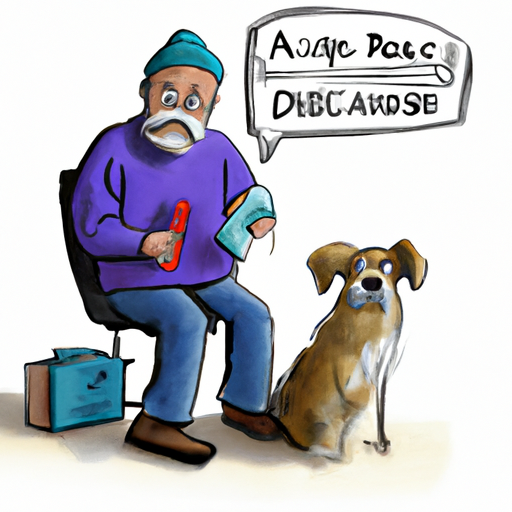Cushing’s disease, also known as hyperadrenocorticism, is a common hormonal disorder in dogs. If your furry friend exhibits symptoms like excessive thirst, increased appetite, hair loss, and a pot-bellied appearance, it might be time to consider testing for Cushing’s disease. Here’s how to recognize the disease, consult with a vet, and proceed with testing.
1. Understanding the Symptoms of Cushing’s Disease
Cushing’s disease mostly affects middle-aged and older dogs. The following are common symptoms which may indicate that your dog has Cushing’s:
- Excessive thirst and urination
- Increased appetite
- Skin changes (thinning, darkening)
- Hair loss
- Pot-bellied appearance
- Increased panting
While these symptoms do not confirm Cushing’s disease, they are significant enough to warrant a vet consultation.
2. Consulting with a Veterinarian
If you notice these symptoms, it’s crucial to take your dog to a vet. The vet will carry out a physical examination and ask about the dog’s medical history. During this consultation, be sure to mention all the symptoms you’ve noticed, even if they seem unrelated.
3. Diagnostic Tests for Cushing’s Disease
There are several diagnostic tests available for Cushing’s disease:
- Blood Test: This is often the first test, checking for elevated levels of cortisol.
- Urine Test: This tests the cortisol-to-creatinine ratio.
- Low-Dose Dexamethasone Suppression (LDDS) Test: This is the most common test for Cushing’s disease in dogs.
- High-Dose Dexamethasone Suppression (HDDS) Test: This test is used if the LDDS test comes back positive, to differentiate between pituitary-dependent Cushing’s (PDC) and adrenal-dependent Cushing’s (ADC).
| Test | Description |
|---|---|
| Blood Test | Checks for elevated cortisol levels |
| Urine Test | Measures cortisol-to-creatinine ratio |
| LDDS Test | Most common; dog is given a low dose of dexamethasone and cortisol levels are checked |
| HDDS Test | Differentiates between PDC and ADC; follows a positive LDDS test |
4. Interpreting the Results
Interpreting the results can be challenging as Cushing’s disease can sometimes mirror other conditions. Your vet will explain the results and what they mean for your dog’s health.
5. Follow-Up Care for Cushing’s Disease
If your dog is diagnosed with Cushing’s disease, ongoing care and management will be necessary. This may include medication, diet changes, and regular check-ups with the vet.
FAQs
Q: Can Cushing’s disease be cured?
A: While Cushing’s disease is not curable, it can be managed with proper care and medication.
Q: Is Cushing’s disease contagious?
A: No, Cushing’s disease is not contagious.
Q: How can I prevent Cushing’s disease in my dog?
A: Unfortunately, there’s no known prevention for Cushing’s disease. Regular vet checkups can help catch any early signs.
Remember, your vet is the best source of information when it comes to your pet’s health. If you suspect Cushing’s disease, don’t hesitate to seek professional advice.



